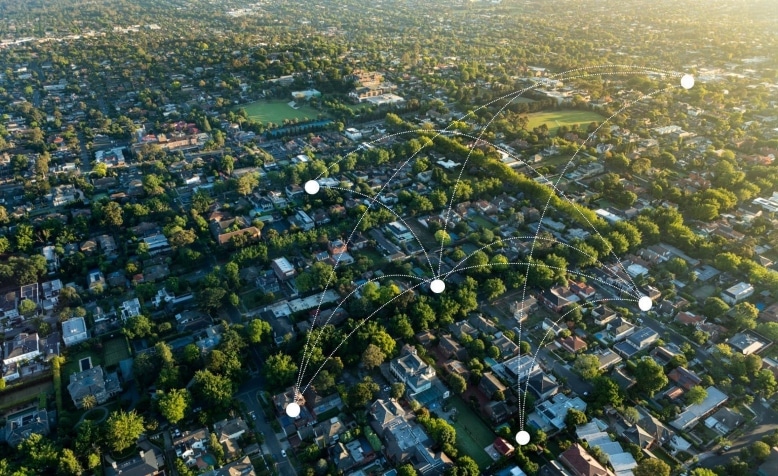Broadband Office Name: Kentucky Office of Broadband Deployment
BEAD Award Amount: $1.09 B
Kentucky Broadband Director: Meghan Sandfoss
Kentucky BEAD Program Tracker
| State | IP Vol 1 Approval | IP Vol 2 Approval | Challenge Process Submission Closed | Challenge Process Final Determination Phase Completed | 1-Year Subgrantee Selection Process |
|---|---|---|---|---|---|
| Kentucky | Yes | Yes | Yes | No | Yes |
Kentucky BEAD Program Information

Key Updates
The Kentucky Office of Broadband Deployment Rebuttal Period of its Challenge Process ends July 17th, then it will move into the Final Determination Phase.
The Office will make the Final Determinations from the Challenge Process results and submit them to the NTIA for approval.
The Office will publish the Final Determinations once the NTIA approves, which is expected to be early Fall of 2024.
The Office of Broadband Development conducted its first Subgrantee Selection Process webinar on July 2, 2024.
Kentucky BEAD Program Plans & Maps
Kentucky BEAD Program Initial Proposal Volume 2: Overview
BEAD Long-Term Objectives
Kentucky’s Broadband Deployment and Digital Equity Objectives
Access:
- Ensure that residents of multi-dwelling units (MDUs) have access to home internet service.
- Promote the development of additional public Wi-Fi connections.
Affordability:
- Continue to promote participation in the Affordable Connectivity Program (ACP) by ISPs and consumers.
- Explore other policy solutions and programs to support low- and no-cost internet subscriptions for eligible households should ACP funding lapse.
Deployment:
- Identify unserved and underserved locations and community anchor institutions (CAIs) in need of broadband infrastructure.
- Eliminate unserved, low-density areas, and high-cost locations.
- Eliminate underserved areas by deploying networks with 100/20 Mbps speeds.
- Identify and leverage other potential funding sources.
- Develop an Initial Proposal that identifies project areas and distribution of federal funds through an efficient and transparent subgrantee selection process.
- Develop a Final Proposal that reviews and strengthens processes/procedures for subgrantee selection identified during the Initial Proposal.
- Coordinate infrastructure development.
- Construct resilient networks and infrastructure.
- Assist ISPs in navigating federal funding requirements.
- Improve permitting processes.
- Increase broadband workforce availability.
Equity:
- Enhance broadband affordability and availability for covered populations.
- Ensure access to affordable devices for all Kentuckians.
- Increase application accessibility and inclusivity to state and local government programs and services.
- Ensure that all Kentuckians are equipped to navigate the internet safely.
- Improve digital literacy for all covered populations in Kentucky.
- Help Kentuckians develop the digital skills necessary for work and life.
Kentucky BEAD Program Project Area Design
Eligible project geographies will be defined by Census Block Groups (CBGs). CBGs may be split into smaller geographies at the discretion of the Office. CBG boundaries and unserved and underserved BSLs and CAIs contained within each will be published prior to the NOIA period. Project applications may include one or multiple contiguous or noncontiguous block groups. By including a CBG in an application, the prospective subgrantee commits to serving no less than 95% of the eligible unserved or underserved BSLs contained within that CBG if awarded.
Kentucky BEAD Program Extremely High Cost Threshold
The Office will not set an EHCT until all priority and non-priority project proposals are received to
ensure that funds are used efficiently and effectively to meet the goal of universal service. The Office will use CostQuest cost modeling data and other relevant data to aid in setting the threshold and the EHCT tool in the NTIA’s Eligible Entity Toolkit to assist in establishing the threshold. The Office may elect to set EHCT regionally to account for factors that vary by region and impact the cost of deployment, such as variations in population density and topography.
BEAD Deployment Subgrantee Selection
Kentucky is asking for the following preregistration evidence from subgrantees and compliance with: Financial capability, managerial capability, operational capability, technical capability, ownership info, public funding info, compliance with laws, cybersecurity/supply chain compliance, and BABA/EHP/NEPA/NHPA compliance.
Primary Scoring Criteria for Priority Broadband Projects:
- 35 pts – Minimal BEAD Outlay
- 30 pts – Affordability
- 10 pts – Fair Labor Practices
Secondary Scoring Criteria
- 2 pts – Speed to Deployment
- 7 pts – Local Coordination
- 8 pts – Network Resiliency
- 8 pts – Scalability of Tech
BEAD Non-Deployment Subgrantee Selection
Kentucky does not anticipate sufficient funding to support non-deployment uses and does not intend to subgrant for non-deployment activities.
BEAD Eligible Entity Implementation
Kentucky proposes two initiatives as the recipient (without making a subgrant):
1. BEAD Implementation, Deployment, and Administrative Activities:
- Activities include further planning, mapping, data collection, and administrative tasks required to manage the BEAD program.
2. Workforce Development Initiatives:
- Collaborate with the Department of Workforce Development in the Education & Labor Cabinet to develop a statewide program to meet BEAD needs.
These initiatives do not involve any broadband adoption activities.
Grant Activities:
- BEAD grant administration
- Hiring to increase Office capacity
- Deduplication of funding
- Implementing the subgrantee selection process
- Continued local coordination
- Project inspection and testing
- Data collection (mapping and analysis)
- Grant disbursement
- Program closeout
- Procurement of software and professional services
Workforce Development Initiatives:
- Local outreach and planning with educational facilities, local community leaders, correctional facilities, and non-profit organizations involved in digital and technical education
- Utilize existing workforce training programs for technical training curriculum in multiple community colleges and workforce centers, focused on covered populations
- Marketing and advertising of workforce development and adult education programs
- Develop career pathways and training access for all parts of the state, especially for covered populations, considering the entire lifecycle of technical training, broadband education, and digital literacy
- Support registered apprenticeship programs
- Mobile training units to provide training access to those with limited mobility or resources
- Re-entry training for “justice-involved” individuals to create pathways to employment
- K-12 education and training modules to guide students in digital skills and digital career pathways
- Coordination efforts between BEAD and DEA personnel
- Data collection to inventory and monitor the success of broadband and digital skillset curriculum
- Provide childcare and transportation stipends or reimbursements to remove barriers to training attendance
BEAD Local, Tribe, and Regional Broadband Planning Process
Kentucky Broadband Office Engagement Activities
Tribal Consultations:
- Kentucky does not have any federally recognized tribes, but there are 13 tribes with interest. Tribal consultations will be conducted.
Statewide Listening Tour:
- A 14-stop listening tour with two virtual sessions attracted over 400 participants.
Focus Groups:
- Highlighted cybersecurity as a significant concern for older adults and veterans.
- Identified the lack of in-person services for non-native speakers and the difficulty of navigating forms, regardless of language.
- Cost of service was noted as a major barrier.
Provider Advisory Group:
- In March 2023, the Office held an advisory meeting with ISPs to encourage discussion on policy issues.
General Outreach:
- Staff have consistently met with elected officials and state agencies, providing updates to stakeholder groups.
BEAD Labor Standards & Protection
Kentucky requires all subgrantees to submit the following information
A Record of Past Compliance with Federal/Employment Laws:
- Information on deployment projects within the last three years.
- Certification form from an Officer/Director level employee attesting to past compliance.
- Written confirmation that the subgrantee has disclosed any violations from contractors within the last three years.
- Discussion of the workforce plan.
Plans for Ensuring Compliance with Federal/Employment Laws:
- Explanation of how the subgrantee will ensure compliance in its labor and employment practices.
- Information on applicable wage scales, wages, and overtime practices for each class of employee expected to be involved in the physical construction of the network.
- Description of how the subgrantee will ensure the implementation of workplace safety committees.
- Other items as outlined in the BEAD NOFO.
BEAD Minority Business Enterprises / Women’s Business Enterprises / Labor Surplus Area Firms Inclusion
Kentucky has 17 counties considered to be labor surplus areas; the local unemployment rate is 20% higher than the national average.
Kentucky will take the necessary affirmitive steps:
- Including MBE and WBE firms on solicitation lists and sending Invitation to Bid.
- Maintaining a list of qualified small, minority, and female owned businesses.
- When economically feasible, dividing total requirements into smaller tasks or quantities so as to permit maximum participation by small businesses and MBE/WBEs.
- Where the requirements permit, establishing delivery schedules which will encourage participation by small businesses and MBE/WBEs.
- If any subcontracts are to be let, requiring the prime contractor to take the above affirmative steps.
- Using the services and assistance, as appropriate, of such organizations as the Small Business Administration and the Minority Business Development Agency of the Department of Commerce.
- Setting aside a percentage of subgrant funds to be awarded to MBE/WBEs.
- Including MBE/WBE criteria with additional points in selection criteria for professional services procurement.”
BEAD Cost & Barrier Reduction
1. Promoting the use of existing infrastructure.
2. Promoting and adapting dig-once policies.
3. Streamlining permitting processes.
4. Streamlining cost-effective access to poles, conduits, and easements.
5. Streamlining rights of way, including the imposition of reasonable access requirements.
BEAD Low-Cost Broadband Service Option
Requirements for Prospective Subgrantees:
- Affordable Pricing: The monthly price, inclusive of taxes and fees, must not exceed the highest rate listed for 100/20 Mbps service in Kentucky according to the Commission’s Urban Rate Survey.
Characteristics of a Low-Cost Service Option Plan:
- Speed: Minimum 100/20 Mbps speeds.
- Timely Installation: Service must be installed within 10 calendar days of a service request.
- Latency: Round trip latency must be less than 100 ms.
- No Data Restrictions: Service must not be subject to data caps, surcharges, or usage-based throttling.
- Service Outage Credits: Provide credits for service outages, measured at 1/30 of the monthly rate per day for outages over 12 hours.
- Price Stability: Commitment not to raise the $30 per month price for 100/20 Mbps service for 2 years from the infrastructure deployment date for each BSL, with any increase thereafter for the next 3 years limited to the rate of the Consumer Price Index.
- Accessibility: The plan must be well-marketed, publicly available, and easily accessible.
BEAD Middle-Class Affordability
Affordability of Internet Service Plans for Middle-Class Households
BEAD Proposal Scoring Criteria:
- Affordability: This is a primary criterion in the scoring rubric for Kentucky, accounting for 30% of the total points.
Special Construction Costs:
- For some Kentucky residents, connecting to internet service is unaffordable due to the distance to their home exceeding the internet service provider’s standard connection drop length from a roadway or easement containing telecommunications infrastructure. The cost incurred by homeowners for extending broadband is known as special construction costs.
- Subgrantees will be prohibited from charging special construction costs for a minimum of 12 months after broadband service is made available to a BEAD-funded location.

